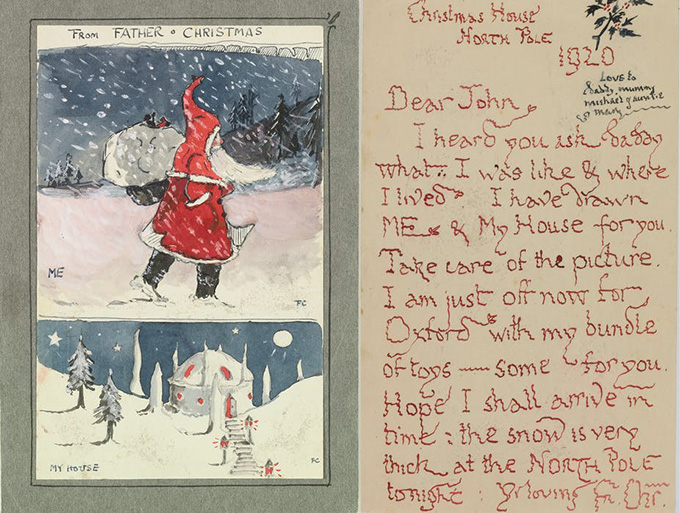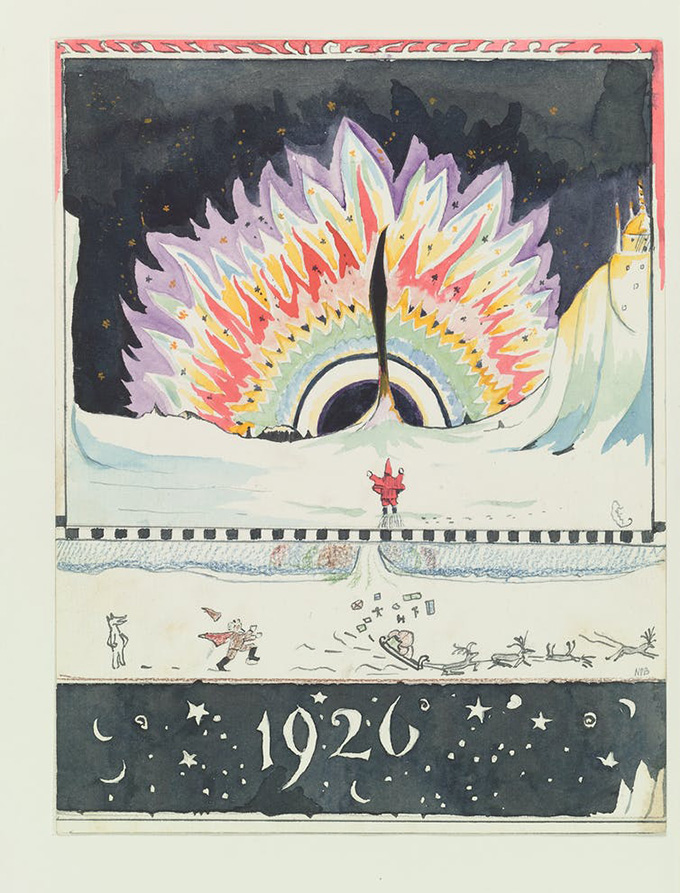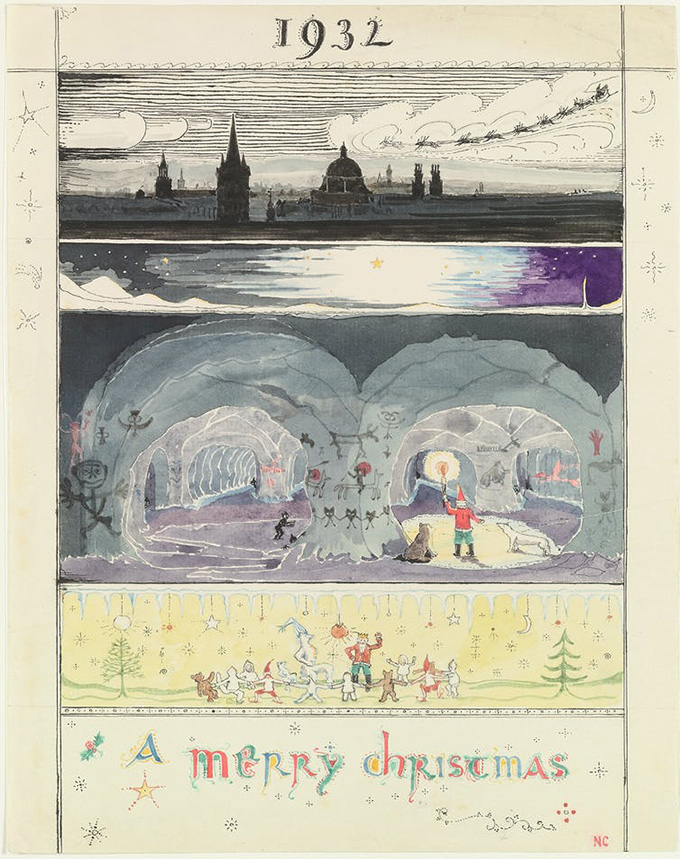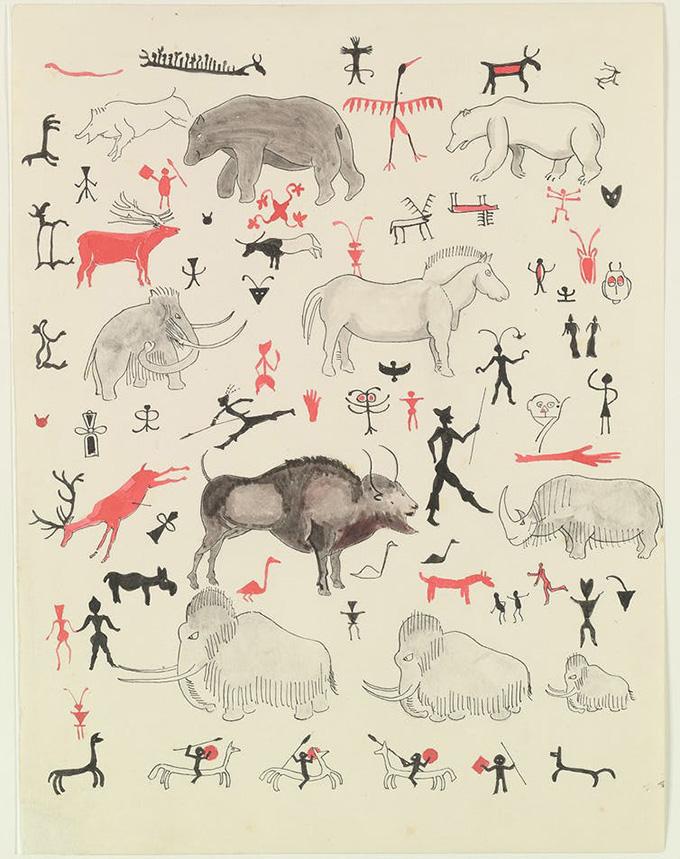
Like so many other parents around the world, JRR Tolkien, the famous author of The Lord of the Rings , has devoted a lot of time and effort to making Christmas a joyful time for his children. Except that he is a man whose imagination gave life to a vast world , containing thousands of years of legends. He brought creatures of all kinds to life there, described wars and battles, and even invented languages. Inevitably, therefore, there was something exceptional about his family traditions.
Every year from 1920 to 1942, the Tolkien children – first John, then Michael, Christopher and Priscilla – will receive a letter from Santa Claus. This one would be written in his hand, similar to a spider (after all, he is a very old man) and illustrated with funny scenes from life at the North Pole. In 2018, the Bodleian Libraries in Oxford exhibited these letters alongside other Tolkien manuscripts, works of art, maps and other creations from around the world.
The exhibition organized at the National Library of France in 2019 also focused on this facet of the famous poet, teacher and novelist.
American influence
Tolkien is not the first writer to write letters from Santa to his children. Mark Twain wrote a famous “letter from Santa Claus” for his eldest daughter, Susie Clemens. And although Tolkien kept the character’s English name, his Santa Claus is associated with many elements of American folklore.

Aurora Borealis, 1926: “Isn’t the North Pole bear stupid? .. Two years ago, he suddenly turned on all the lights of the North Pole. We have never heard or seen anything like it. I tried to draw a picture of them, but my hand is shaking too much to represent them correctly and anyway, it’s not easy to paint sparkling lights, is it? “. Tolkien Estate
The representation of a Santa Claus dressed in red and white, perched on a sleigh pulled by reins, and distributing gifts to children every Christmas Eve, comes from perhaps the most famous poem in the English language: “The night before Christmas ” . Written in the XIX th century by Clement Moore or Henry Livingston (the authorship is the subject of debate ), this American classic poem portrays Saint-Nicolas, or Santa Claus as we know it today.
This imagination around Santa Claus was enriched by the German-American illustrator Thomas Nast , who assisted Santa Claus with elves to assist him, as well as a toy-making workshop, representing him as a character domiciled at the Pole North, where he regularly receives letters from children.
Tolkien borrows freely to all that American pop culture happening in the late XIX th century in Britain and met a huge success. But he also takes his Santa Claus in other directions, around his own mythology of Middle-earth, which he was developing in parallel.
Old and new friends
Of course, there are elves at Tolkien’s North Pole. But, beyond their small size, their jovial appearance and their pointy hats (far from the universe of the Lord of the Rings ), they belong to different families: the Snow Elves, the Red Elves, or gnomes, Green Elves – much like High Elves, and Wood Elves can be found in the novel.
Some of these Christmas elves are fierce warriors, who made evil goblins bite the dust in battle. These goblins are the precursors of those we meet in The Hobbit , and later of the Orcs. They live underground, like to dig tunnels and pose a constant threat for Christmas.

Christmas, 1932: “What wonderful caves! I knew of their existence but I did not know that they were so numerous and so vast. Of course, the goblins took refuge in the deepest cavities and corners, and we soon found the polar bear. He was all skinny, having been in the caves without eating for a fortnight … At the top of the map you can see a picture of my arrival above Oxford – I drew it in my head, but it matches more or less to reality. Your house is right where we see three small black dots emerging from the shadows, to the right. » The Tolkien Estate Ltd, 1976
At the same time, Tolkien greatly enriches the mythology of Christmas. Santa’s best friend (also an incorrigible rascal) is the polar bear, whose antics are at the heart of the first letters. Later, his nephews Paksu and Valkotukka (who mean “fat” and “white hair” in Finnish respectively) bring comic breaths and illustrate Tolkien’s love for this language which influenced one of the idioms that ‘he created, Quenya, spoken by the Elves of Middle-earth.
In addition, there are a few “etiological” myths, explaining the origin of certain things that happen in the real world of Tolkien’s children. If we find chocolates in crumbs, it is because the polar bear would have crushed them. And if we see a bright light standing out against the night sky, it surely comes from the gigantic Christmas tree at the North Pole.
Innocence lost
Other details and inventions make this frozen world wonderful and intriguing. Santa Claus has a tap in his cellar that allows him to turn on the Northern Lights. Rock art inherited from prehistoric humans can be found in goblin caves, including paintings of mammoths and reindeer. And the little snow boys (the sons of the snowmen who live nearby) are invited to the parties held at Santa’s house.

Cave Paintings, 1932: The polar bear himself was amazed when I approached the light, as all the walls of these caves are covered with images, hewn into the rock or painted in red, brown and black. Some of them are very successful (mainly animal ones), some are weird and some are bad. And there are plenty of weird marks, signs, and scribbles, some of which look threatening. “. Tolkien Estate
Even more Tolkienien, one finds there languages and invented alphabets. An elf named Ilbereth, who becomes Santa’s secretary, wishes the children a Merry Christmas in the Elvish language, which stands out as a variation of Tolkien’s tengwar writing system, the same one featured on the ring unique from the Lord of the Rings . And the polar bear utters a phrase in “arctic” (a version of Quenya) and presents us an alphabet that he designed from goblin symbols.
The “Letters from Santa Claus” were published after Tolkien’s death in 1973, and their enduring popularity is due, in my opinion, to the long Christmas saga they create and to the humor and emotion of the fatherly voice. that crosses them.
Written as the Second World War raged, the poignant “final letter”, when Santa Claus bids farewell to children now too old to put their slippers in front of the tree, marks the end of innocence in more ways than one . But the myth of Santa Claus is still alive today and continues to be one of the favorite holiday readings for children around the world.
Author Bio: Dimitra Fimi is Lecturer in Fantasy and Children’s Literature at the University of Glasgow
